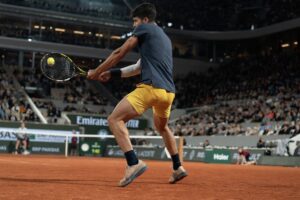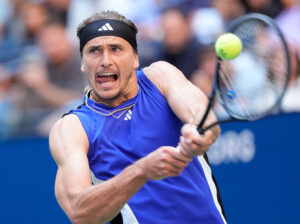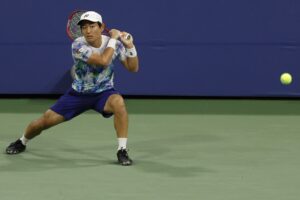“I’m on my own, and the road is long/I’ll do what it takes, just finding a place/Where I Belong/Being down, not out, being lost, not found/No words, no sound on this lonely track/The wind can roar, the storm can rage/It’s all the same, I’m not turning back.”
These lyrics to British boy band The Wanted’s song Where I Belong essentially capture a person’s eagerness to punch over his/her weight and overcome the struggles that lie in the way. Most of us can recognize with the gist of the song – to keep your beliefs strong when going through trying times. Take the case of British superstar Andy Murray. The huge fall from grace has hit him hard, but what’s important is his attitude in this entire situation.
If there’s a timeline to Murray’s struggles with injury – especially the hip – it won’t be a particularly satisfying view. Be it for a short period or a slightly longer one, injuries have always affected him but never were the key cause of discussion. But the epic run that he had in 2016 to finally become the best men’s player on the planet, drained him completely. He never found that rhythm again and steadily gave in to the hip injury by mid-2017. The more he played, the harder he fought, and the more he struggled to resist an injury to an already-fragile hip.
Cut to 2018. Andy Murray played just 6 tournaments the entire season and called it quits, aiming for an early 2019 comeback. While his season ended one week before its scheduled date because of an ankle injury, it’s the hip that’s still the matter of concern. His loss to Fernando Verdasco at Shenzhen Open, right after beating David Goffin, was probably a blessing in disguise. Granted, he couldn’t participate in Beijing, but he’ll get a much-needed break and it’ll be surprising if he doesn’t make full use of it.
After losing the #1 ranking just before 2017 US Open, he dropped outside of top 800 following his withdrawal from 2018 Wimbledon. Road to regain physical fitness for Andy Murray has been a long and tedious journey. But, his withdrawal from the China Open in Beijing shows that it’s not enough. There’s still a lot for him to do on the fitness part. And, especially since his style of play is so taxing on the body, he knows quite well that an affected hip and ankle won’t let him play his A-game ever, if not cured.
Tennis, especially the men’s tour, has seen many a hip injury end great careers. Surgeries have sometimes gone the wrong way; while on other occasions, a recurring problem has bugged an entire career. When clay great Gustavo Kuerten suffered a similar fate, he was 25. He had to operate on his hip, and when that happened, his career saw a steady but untimely descent. From being just the fourth man in Open Era to win three Roland Garros singles titles at the age of 25, he never reached another Grand Slam semifinal again. But, because he was still very young – thus physically more durable to operations and pain – he could still continue for a few more years, albeit as a mere shadow of his former self.
The primary difference between Kuerten and Murray’s case is the Brit’s age. Andy is 31 now, will be 32 next year. At this point in his career, and with the kind of career he has amassed, he possibly couldn’t care less about his ranking. If he did, he would’ve played more tournaments. But, as his mother Judy Murray said, he’s pretty desperate to get his top fitness back, and he wouldn’t ever risk it playing an ATP 500. He knows his body is fragile to injuries now more than ever, and if he plays ignoring his physical shortcomings, he’ll have to pay for it heavily.
Physical conditioning following any injury is the most important aspect of getting back to complete fitness. Andy Murray’s conditioning regarding his hip problems is still a work in progress, and the timeout can only help him to extend his career. That and a smarter schedule planning is the solution to a prolonged career. Roger Federer is probably the biggest example (and an active one, at that) to follow in such cases. The Swiss legend’s schedule management throughout his career has been an enviable act for the ones that suffer heavy injuries. If Murray follows suit, it’ll be a good decision for this final stage of his career.
By his own admission, Andy Murray is drawing inspiration from Argentine compatriot Juan Martin del Potro and his eternal battle with injuries. Del Potro has suffered two career-threatening injuries this decade which resulted in him sitting out for three years in total, but he’s never left the battleground until he’s won. And he has. Currently enjoying a career-best season ranking wise, Del Potro has given the finger to his injury troubles. It’s no wonder that Murray will want to replicate the same.
A sportsperson’s journey is always a marathon. You sprint, and you’ll lose in the long run. It might get your short-term aim fulfilled, but it’s the wise ones that outlast their peers. Whether he will succumb to this recrudescing hip trouble, will be an intriguing story for the 2019 tennis season. But, working with a rehab specialist in Philadelphia, Andy Murray will take each day as it comes, and even a 0.001% improvement on Day 1 can lead to him regaining full fitness by 2019. It’s his marathon to run, and it’s his race to win. Being the fighter that he is, he will be raring to get back to where he belonged prior to the injury.
Main Photo from Getty






